Cat Mate 254 Electromagnetic Handleiding
Bekijk gratis de handleiding van Cat Mate 254 Electromagnetic (3 pagina’s), behorend tot de categorie Huisdier. Deze gids werd als nuttig beoordeeld door 108 mensen en kreeg gemiddeld 4.2 sterren uit 54.5 reviews. Heb je een vraag over Cat Mate 254 Electromagnetic of wil je andere gebruikers van dit product iets vragen? Stel een vraag
Pagina 1/3

+44 (0)1932 700 001
N America (936) 760 4333
www.pet-mate.com
5411/0508
61/2"
(165mm)
81/
2"
(216mm)
3/4"
(19mm)
*Screw not supplied
FOR WOODEN DOORS
AND PLASTIC PANELS
1. It is recommended that the
bottom of the hole is
approximately the same level as
your pet's stomach.
2. Place this template in desired
position on door and draw round
completely.
3. Prior to cutting the hole, drill 2
holes of approximately 1/4" (6mm)
diameter in top corners.
4. Use an electric jig-saw to cut
along the inside of the drawn line.
Be careful to cut hole square to
the door, particularly with thicker
doors. Ensure that the frames are
free-fitting in the hole.
5. Determine the thickness of the
panel in your door (see fig. 5).
For Panels
0 - 7/8" (0-23mm):
6. Position interior frame on
inside of door and mark the 4
screw positions.
7. Remove frame and drill screw
clearance holes in panel to
approx.
3/16
" (4mm) diameter.
8. Select the appropriate screws
for the panel in your door (see fig
8).
9. Then, using the appropriate
screws and working from the
inside of the house, tighten the
interior frame to the exterior
frame. When happy with
installation cover screw heads
with caps supplied.
For Panels
7/8"+ (24mm+):
6. First screw interior frame to
inside of panel with short 1/2"
(13mm) screws.
7. Next drill out the 4 screw holes
in the exterior frame to allow close
clearance on screw.
(Recommended drill 3/16
" (4mm)
diameter.)
8. Finally fix exterior frame to
exterior of door using 3/4" (19mm)
screws. When happy with
installation cover screw heads
with caps supplied.
WALLS
After making a hole in your wall,
line with 3/4" (19mm) plywood or
similar material, as shown in fig.
10. This gives a neat tunnel to the
installation and readily accepts
the fixing screws.

1. Inleiding
Dit elektromagnetische kattendeur is zo ontworpen
dat het alleen maar poezen doorlaat die een
halsbandje met een magneet omhebben. Door een
elektromagnetische vergrendeling geeft de
kattendeur normaal geen toegang tot het huis.
Zwerfkatten worden verhinderd uw huis binnen te
komen. Maar wanneer uw eigen kat met het
magneetbandje om bij de kattendeur komt,
reageert de sensor die in de buitenrand van de
kattendeur zit. Deze sensor geeft een signaal en
automatisch ontsluit zich nu de elektromagnetische
vergrendeling. Uw kat kan nu de kattendeur met de
neus open duwen en naar binnen gaan. Zodra uw
kat door de kattendeur binnen is gekomen, veert de
elektromagnetische vergrendeling terug in de
normale uitgangspositie en andere katten die
achter uw kat aanlopen, kunnen niet binnenkomen.
Andere katten die een magneetbandje dragen
kunnen echter wel uw huis binnen komen. Het huis
verlaten door de kattendeur kan ook zonder het
magneetbandje om.
2. Aanbrengen van batterij en testen
Open voorzichtig het klepje dat de batterijen bedekt
door de lipjes die aan de zijkanten zitten (Fig. 6)
omhoog te duwen. Ook kunt u een kleine
schroevendraaier in het centrale slotje op de
batterijhouder steken en de houder op deze manier
openen. Gebruik bij voorkeur een 9 volt alkaline
batterij, maat 6F22. Een alkaline batterij gaat bij
normaal gebruik gemiddeld 12 maanden mee. U
kunt ook een accu (oplaadbare batterij) gebruiken.
Verbind de batterij met het losse contact en plaats
hem links van de gemonteerde elektromagnetische
vergrendeling (zie Fig. 7a/7b). (NB. De achterkant
van de batterij er het eerst inschuiven).
Batterijhouder daarna goed sluiten.
3. Halsband
Het halsbandmagneetje moet direct op
de halsband van uw poes worden
bevestigd met de pootafdruk naar voren
(zie Fig. 4). Wanneer dit niet correct
gedaan is, wordt de werking negatief
beïnvloed.
Wij raden u aan ook het identiteitsplaatje in te
vullen, zelfs als uw kat nog nooit verdwaald is, want
een halsband kan altijd verloren raken! Zie Fig. 5
voor het aanbrengen van het identiteitsplaatje. Wij
adviseren het gebruik van een halsband van textiel
zonder metalen onderdelen (naamplaatjes, enz.).
Controleer of de halsband niet te los of te vast zit.
(De halsband moet ruim genoeg zijn om over de
kop van de kat te gaan). De meest ideale positie is
dat de magneet zo hangt dat, op het moment dat
de poes van buitenaf de kattendeur nadert, de
onderkant van de magneet zich op gelijke hoogte
bevindt met de buitenrand van de kattendeur. (Zie
Fig. 1 en 2). Als de halsbandmagneet niet op de
juiste hoogte hangt, kan het zijn dat uw kat niet
probleemloos binnen kan komen, omdat de
magneet niet binnen het 40mm grote bereik van de
sensor komt.
4. Het trainen van uw kat
Als uw kat niet aan een kattendeur is gewend moet
u de kat waarschijnlijk eerst conditioneren en dit
kan uitstekend met behulp van de maaltijden.
Sommige katten kunnen in het begin wat
zenuwachtig worden door de “klik” in het systeem
van de elektromagnetische vergrendeling.
In dat geval kunt u
gebruik van
elektromagnetische
werking stelt.Wann
tijdelijk de batterije
totdat uw kat gewe
adviseren u dringe
katje niet te vroeg z
laten gebruiken. O
van de kattendeur
meer met zich me
alleen mee laat.
5. Oplossen van
Als de elektromagn
werken, kijk dan of
a. De halsband op
de kat zit, name
identiteitsplaatje na
b. Wikkel de halsba
(zie Fig. 3), zodat d
100mm afstand va
uw hand in de richt
onderrand van de
sensor komt. Wa
40mm van de
elektromagnetische
kunt u de kattendeu
openduwen. Is de
getest zoals hie
functioneert goed,
waarom het uw k
halsband toch niet
de goede hoogte
onwaarschijnlijke
elektromagnetische
goed is, dan kan
gedemonteerd en te
dan uiteraard voor
niet nodig het he
Maak de batterijh
batterij. Draai d
vergrendeling op z
vergrendeling na
gelijktijding naar vo
vrij komt.
Als er nog steeds
contact op m
E NL
1. Introducción
Esta gatera electromagnética se p2-ha diseñado
para admitir selectivamente a los gatos que
lleven un collar con imán. Normalmente, la
apertura de la hoja hacia la casa se previene
mediante un cierre electromagnético, que evita
que gatos callejeros penetren en su casa. Sin
embargo, cuando su gato se acerque con el
imán, un detector situado en el borde exterior
del molde del marco detectará el imán
haciendo que el cierre electromagnético se
abra automáticamente. Ahora, su gato podrá
empujar la hoja con la nariz y entrar en casa.
Una vez de que su gato haya pasado a través
de la hoja, el cierre electromagnético volverá a
su posición normal para que los gatos que le
sigan no puedan entrar. No obstante, otros
gatos que lleven imán también podrán entrar.
Los gatos pueden salir por la gatera sin
necesidad del imán.
2. Instalación y ensayo de la pila
Suelte la cubierta de la pila tirando de las
lengüetas situadas a cada lado (Fig. 6).
Alternativamente, inserte un destornillador
pequeño en la ranura central situada en la
cubierta de la pila y sáquela con acción de
palanca del molde del marco.Se recomienda el
uso de una pila alcalina de 9 voltios, tamaño
6F22. La duración normal de una pila alcalina
es de 12 meses aproximadamente.
Alternativamente, puede utilizar una pila
recargable. Conecte la pila al conector flojo e
introdúzcala en el lado izquierdo del conjunto
del cierre electromagnético, como se muestra
en las Figuras 7a/7b. (NB - introduzca primero
el extremo de la terminal de la pila. Vuelva a
colocar fijamente la cubierta de la pila.
3. Collar
El imán para collar deberá acoplarse
directamente al collar de su gato, con
el símbolo impreso de la pata mirando
hacia afuera (véase la Fig. 4). La
colocación incorrecta afectará el
rendimiento del producto.
Recomendamos que rellene la placa de
identidad, p2-ya que aunque sea improbable que
su gato se pierda, ¡es posible que pierda el
collar! Para aplicar la placa de identidad,
consulte la Fig. 5. Le recomendamos que utilice
un collar de tejido sin componentes metálicos
(discos con el nombre, etc.). Compruebe que
el collar del gato no esté ni demasiado prieto ni
demasiado flojo. (El collar deberá poder pasar
fácilmente por la cabeza del gato). Idealmente,
el imán deberá colgar de forma que su parte
inferior se nivele con el borde exterior de la hoja
a medida que el gato se aproxima desde el
exterior (véase las Fig. 1 y 2). Si el imán del
gato no está nivelado con el borde exterior de
la hoja, el gato podrá experimentar dificultades
para entrar, p2-ya que no logrará acercar el imán
al detector (a unos 40mm) lo suficientemente.
4. Adiestramiento del gato
Si su gato no p2-ha utilizado una gatera con
anterioridad, es probable que primero necesite
inducirle con comida a que pase. En principio,
algunos gatos se sienten nerviosos con el
sonido ‘clic’ que se produce al operar el cierre
electromagnético.
En estos casos, puede resultar útil acostumbrar
al gato a la operación de la hoja sin el cierre
electromagnético. Para ello, quite la pila y fije
firmemente el brazo de cierre con cinta
adhesiva, hasta que el gato se haya
familiarizado con su operación.Observe que no
recomendamos dejar solos a los gatos, y
particularmente a los gatitos, sin asegurarse
primero de que estén totalmente familiarizados
con su operación.
5. Resolución de problemas
Si el cierre electromagnético no funcionase
correctamente, sírvase comprobar lo siguiente:
a. El collar está acoplado en la orientación
correcta, con la flecha del imán y la placa al
frente (véase la Fig. 4).
b. Coloque el collar del gato alrededor de
cuatro dedos de su mano como se muestra en
la Fig. 3, de forma que el imán esté a una
distancia aproximada de 75 - 100mm de la
punta de sus dedos. Diríjase hacia la hoja con
la parte inferior del imán nivelada con el
detector.Cuando el imán esté a unos 40mm del
detector, el cierre electromagnético deberá
activarse permitiéndole abrir la hoja con la
punta de los dedos. Si el cierre
electromagnético funciona correctamente al
comprobarlo de esta manera, observe por qué
el gato no lo logra, por ejemplo, el gato no lleva
puesto el collar correctamente, la gatera no
está instalada a la altura correcta, etc. En el
improbable caso de que el conjunto del cierre
fuera defectuoso, podrá desmontarlo y
devolverlo para su canje, evitando así la
necesidad de tener que desmontar toda la
gatera. Para ello, quite la cubierta de la pila y
desconecte la pila. Destornille los dos tornillos
de retención del conjunto del cierre; suelte el
cierre mientras tira hacia adelante hasta sacar
el conjunto completo.
Si continuara experimentando problemas,
llame a PET MATE Helpline.
1 2 3 4 5 6
7a
Pet Mate Ltd. garantiza su producto durante un
período de 3 años a partir de la fecha de
compra, siempre y cuando haya registrado los
detalles de su compra en nuestro sitio web,
www.pet-mate.com, durante los 14 días
posteriores a la fecha de compra. (Si no tuviera
acceso a un ordenador, por favor, envíe los
detalles de su compra junto con una copia del
recibo, su nombre y dirección.) En caso de
producirse un fallo, póngase en contacto con
Servicio al Cliente de Pet Mate para obtener un
número de autorización de devolución. La
garantía se limita a aquellos fallos que se
produzcan como consecuencia de materiales o
fabricación defectuosos. Todo artículo
defectuoso se reparará o reemplazará a la
discreción del fabricante, siempre y cuando el
defecto no haya sido causado por negligencia,
uso indebido o el uso y desgaste normales. Sus
derechos estatutarios no resultarán afectados.
Pet Mate Ltd. gara
3 jaar na koopda
afhankelijk van de
aankoop van uw k
www.pet-mate.co
computer hebt, wi
aanschaf samen
koopbewijs inclu
opsturen.) Mocht
neemt u dan conta
Pet Mate en u
nummer voor re
slechts defecten
fabrieksfout. Elk
gerepareerd of v
van de fabrikant, e
niet ontstaan is d
gebruik of door no
effect op uw vastg

D
1. Einführung
Diese elektromagnetische Katzenklappe ist so
gebaut, dass sie nur solchen Katzen Zutritt gewährt,
die den entsprechenden Halsbandmagneten tragen.
Das Öffnen der Klappe von außen wird durch eine
elektromagnetische Sperrvorrichtung verhindert, so
dass fremde Katzen nicht ins Haus gelangen können.
Wenn sich jedoch Ihre Katze mit dem Magneten am
Halsband der Klappe nähert, wird durch einen
Detektor im Außenrahmen der Klappe, der auf den
Magnet reagiert, die elektromagnetische Sperre
automatisch entriegelt. Ihre Katze kann dann die
Klappe mit der Nase aufstoßen und ins Haus
durchschlüpfen. Sobald die Katze die Klappe passiert
hat, kehrt die elektromagnetische Sperre in ihre
normale Verriegelungsposition zurück, wodurch der
Zutritt anderer Katzen verhindert wird. Beachten Sie
jedoch, dass andere Katzen, die einen
Halsbandmagneten tragen, ebenfalls diese Tür
passieren können. Katzen können durch die Klappe
auch ohne Magnethalsband nach außen gelangen.
2. Einlegen und Testen der Batterie
Den Batteriedeckel durch Ziehen der Laschen öffnen,
die sich an beiden Seiten befinden (Abb. 6). Alternativ
einen kleinen Schraubenzieher in den mittleren Schlitz
im Batteriedeckel einstecken und den Deckel vom
Gehäuse weg abheben. Es wird empfohlen, 9 Volt
Alkaline-Batterien, Größe 6F22 zu verwenden. Solche
Batterien halten im Normalbetrieb ungefähr 12
Monate. Stattdessen kann auch eine aufladbare
Batterie verwendet werden. Den Batteriestecker an
die Batteriepole anschließen und die Batterie in ihre
vorgesehene Position links von der
elektromagnetischen Sperreinrichtung schieben
(7a/7b). (NB – zuerst die Batterie von ihrem Polende
aus einschieben.) Den Batteriedeckel wieder fest
aufsetzen.
3. Halsband
Der Magnet muss direkt am Halsband
Ihrer Katze befestigt werden, wobei das
Katzenpfotensymbol nach vorn weist
(siehe Abb. 4). Ist dies nicht der Fall, wird
die Leistungsfähigkeit bzw. die Funktion
dieses Produkts beeinträchtigt.
Es wird empfohlen, den Identitätsaufkleber
auszufüllen – Katzen kommen zwar selten abhanden,
könnten jedoch eventuell ihr Halsband abzustreifen
versuchen! Das Identitätsschild wie in Abb. 5 gezeigt
vorbereiten und anbringen. Wir empfehlen die
Verwendung eines aus Gewebe bestehenden
Halsbandes ohne Metallanhänger (wie z. B.
Namensmarken). Sicherstellen, dass das Halsband
nicht zu eng oder zu weit geschlossen ist. (Es sollte
lose genug sein, um sich über den Kopf der Katze
streifen zu lassen.) Im Idealfall sollte bei der
Annäherung der Katze von außen das untere Ende
des Magnets auf gleicher Höhe mit dem Außenrand
der Klappe sein (siehe Abb. 1 und 2). Wenn dies nicht
der Fall ist, könnte Ihre Katze Schwierigkeiten haben,
die Klappe zu öffnen, da der Magnet dann nicht nahe
genug (40mm) an den Detektor herangebracht wird.
4. Abrichten der Katze
Wenn Ihre Katze noch nie eine Katzenklappe benutzt
hat, müssen Sie sie wahrscheinlich zunächst mit
Futter durch die Klappe locken. Manche Katzen
reagieren anfänglich etwas erschreckt, wenn sie das
Klicken hören, das durch den Betrieb der
elektromagnetischen Sperre ausgelöst wird.
Sollte dies der Fa
an die Benutzu
Sperrvorrichtun
lediglich die B
Schließarm vor
fixieren, bis Ihre
vertraut ist. Bei a
Tieren - wird em
mit der Betätigu
bevor sie damit a
5. Fehlersuch
Falls die elektro
funktionieren sch
a. Das Halsban
befestigt sein, d
Schild nach vorn
b. Folgendes ve
vier Finger Ihrer
der Magnet u
Fingerspitzen en
herannähern, da
auf gleicher Hö
Entfernung von c
elektromagnetis
entriegeln, so
Fingerspitzen
elektromagnetis
funktioniert, nac
durchgeführt ha
trotzdem nicht
Halsband Ihrer K
Katzenklappe in
usw. lm unw
elektromagnetisc
sollte, kann die
und zum Austau
also nicht nötig
entfernen. In
abnehmen und d
entfernen. Die
Sperren-Baugru
niederdrücken
Baugruppe völlig
Sollten Sie w
so setzen S
He
1. Introduction
This Electromagnetic Cat Flap is designed to
selectively admit only cats wearing a collar
carrying a magnet. Normally the flap is
prevented from opening into the house by an
electromagnetic catch, thus preventing stray
cats from entering your house. However, when
your cat approaches wearing the magnet, a
detector sited in the outer edge of the body
moulding senses the magnet and the
electromagnetic catch is automatically
depressed. Your cat may then push open the
flap with its nose to enter the house. As soon as
your cat has passed through the flap the
electromagnetic catch returns to its normal
position, so that following cats are prevented
from entering. However, other cats wearing a
magnet are not prevented from entry. Cats may
exit from the flap without wearing a magnet.
2. Battery Installation and Testing
Ease off the battery cover by pulling on the tabs
positioned at each side. (Fig. 6.) Alternatively,
insert a small screwdriver into the centre slot
located on battery cover and lever away from
body moulding. The recommended battery is a 9
volt alkaline, size 6F22. An alkaline battery
should give approximately 12 months normal
life. Alternatively a rechargeable battery may be
used. Connect the battery to the loose
connector and slide into position to the left hand
side of the electromagnetic catch assembly, as
shown in Figs. 7a/7b. (NB- slide in battery
terminal end first). Replace the battery cover
firmly.
3. Collar
The collar magnet should be attached
directly to the cat’s collar with the
paw print symbol facing forwards (see
fig 4). Not doing so will affect this
product’s performance.
It is recommended that you complete the
identity sticker as even if your cat is unlikely to
get lost, it may decide to lose its collar! To apply
Identity label, please refer to Fig 5. We
recommend the use of a fabric collar without
metal components (name discs etc.). Check that
the cat’s collar is not too tight nor too loose.(The
collar should be free to pass over the cat’s
head.) Ideally the magnet should hang so that
the bottom of the magnet is level with the
outside edge of the flap as the cat approaches
from the outside. (See Figs. 1 and 2.) If the cat’s
magnet is not level with the outside edge of the
flap your cat may experience difficulty gaining
entry as it will not readily be able to bring its
magnet sufficiently close (within 40mm (11
⁄2”)) to
the detector.
4. Training Your Cat
If your cat has never used a cat flap before, you
will probably need to entice it through with its
meals to begin with. Some cats may initially be
nervous of the ‘click’ produced on operation of
the electromagnetic catch.
In such cases you may prefer to get your cat
used to the operation of the flap without the
electromagnetic catch.To do this, simply remove
the battery and securely tape down the locking
arm, until your cat is familiar with its operation.
Please note that we do not recommend that cats
and particularly kittens are left alone to use a cat
flap without first ensuring that they are
completely familiar with its operation.
5. Troubleshooting
If the electromagnetic catch does not appear to
function correctly please check the following:
a.The collar is attached in the correct
orientation, with the magnet’s arrow and label
facing forwards (see fig 4).
b. Place the cat’s collar around four fingers of
your hand as shown in Fig. 3, so that the magnet
is approximately 75mm - 100mm (3 - 4”) back
from your fingertips.
Move towards the flap with the bottom of the
magnet level with the detector. When the
magnet is within about 40mm (11⁄2”) of the
detector the electromagnetic catch should be
activated enabling you to push open the flap
with your fingertips.
If the electromagnetic catch operates correctly
when tested as above, try to observe why the
cat is not succeeding, e.g. is the cat not wearing
its collar correctly? Is the cat flap installed at the
correct height? etc.
In the unlikely event of the electromagnetic
catch assembly proving to be faulty please note
that the catch assembly may be removed and
returned for replacement, thus avoiding the
need to remove the cat flap entirely. To do
this, remove the battery cover and disconnect
battery. Unscrew the two retaining screws for the
catch assembly, then depress catch while
pulling forward until assembly is fully removed.
If you still have a problem, please
contact the PET MATE Helpline.
1 2 3 4 5
Pet Mate Ltd. guarantee your product for a
period of 3 years from the date of purchase,
subject to the registration of your purchase
details on our website www.pet-mate.com
within 14 days of purchase. (If you do not have
access to a computer, please send details of
your purchase with copy of receipt along with
your name and address.) In the event of a fault
developing contact Pet Mate customer services
for a returns authorisation number. The
guarantee is limited to any defect arising due to
faulty materials or manufacture. Any defective
item will be repaired or replaced free of charge
at the manufacturer’s discretion, provided that
the defect has not been caused by neglect,
misuse or normal wear and tear. Your statutory
rights are not affected.
Pet Mate Ltd. gew
3 Jahren ab dem
Ihres Produkts au
innerhalb von 14
(Wenn Sie kein
haben, senden
zusammen mit e
Angabe Ihres Na
Ihrem Produkt e
Sie bitte den Kund
eine Rücksendun
können. Die Gara
fehlerhaftes M
zurückzuführen s
Ermessen des
ersetzt, vorausge
Missgeschick, V
oder normale
gesetzlichen Rech
Product specificaties
| Merk: | Cat Mate |
| Categorie: | Huisdier |
| Model: | 254 Electromagnetic |
Heb je hulp nodig?
Als je hulp nodig hebt met Cat Mate 254 Electromagnetic stel dan hieronder een vraag en andere gebruikers zullen je antwoorden
Handleiding Huisdier Cat Mate

4 April 2023

3 April 2023

13 Februari 2023

7 Februari 2023

6 Februari 2023

27 Januari 2023

26 Januari 2023

13 Januari 2023

3 Januari 2023
Handleiding Huisdier
- Trixie
- Zoofari
- Nite Ize
- Closer Pets
- Carlson
- Weenect
- Catit
- SureFlap
- Yamazen
- Physa
- IKEA
- Bliss Outdoors
- Sharper Image
- Orbiloc
- Andis
Nieuwste handleidingen voor Huisdier
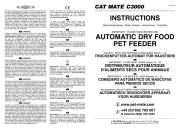
8 September 2025
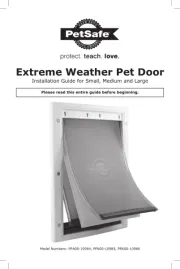
15 Juli 2025
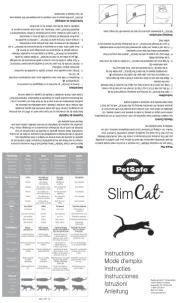
14 Juli 2025

9 Juni 2025
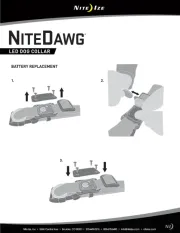
6 Juni 2025
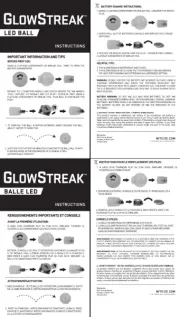
4 Juni 2025
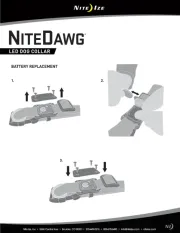
4 Juni 2025
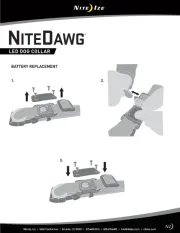
3 Juni 2025
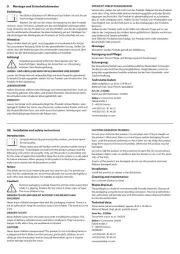
3 Juni 2025
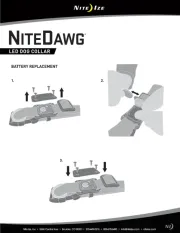
3 Juni 2025